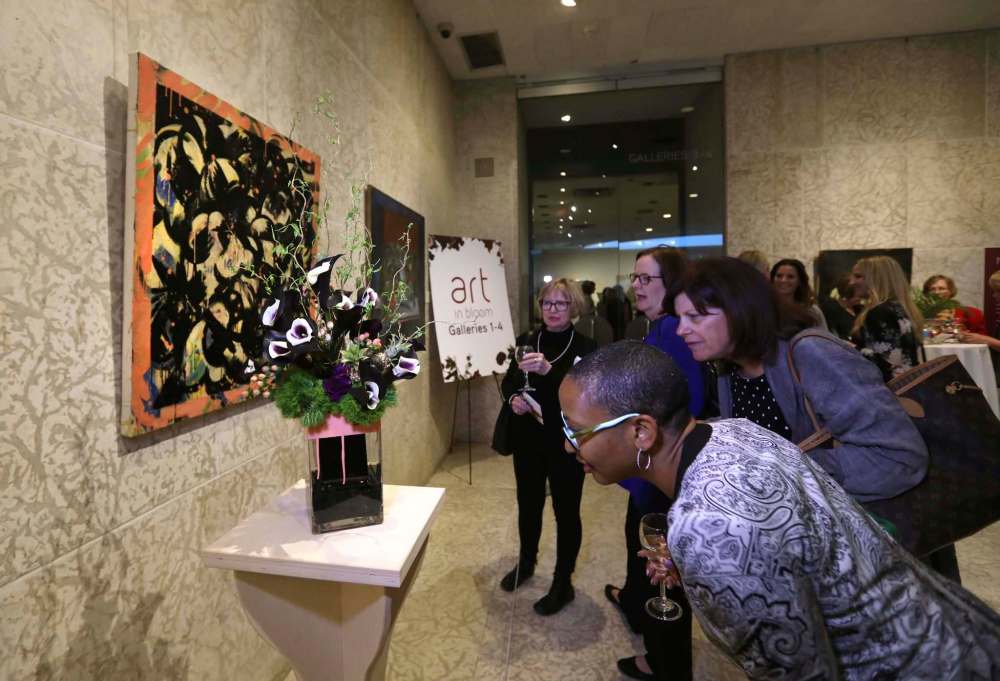Winnipeg an arts-positive city: survey
Council's economic-impact study first to capture public attitudes
Advertisement
Read this article for free:
or
Already have an account? Log in here »
To continue reading, please subscribe:
Monthly Digital Subscription
$0 for the first 4 weeks*
- Enjoy unlimited reading on winnipegfreepress.com
- Read the E-Edition, our digital replica newspaper
- Access News Break, our award-winning app
- Play interactive puzzles
*No charge for 4 weeks then price increases to the regular rate of $19.00 plus GST every four weeks. Offer available to new and qualified returning subscribers only. Cancel any time.
Monthly Digital Subscription
$4.75/week*
- Enjoy unlimited reading on winnipegfreepress.com
- Read the E-Edition, our digital replica newspaper
- Access News Break, our award-winning app
- Play interactive puzzles
*Billed as $19 plus GST every four weeks. Cancel any time.
To continue reading, please subscribe:
Add Free Press access to your Brandon Sun subscription for only an additional
$1 for the first 4 weeks*
*Your next subscription payment will increase by $1.00 and you will be charged $16.99 plus GST for four weeks. After four weeks, your payment will increase to $23.99 plus GST every four weeks.
Read unlimited articles for free today:
or
Already have an account? Log in here »
Hey there, time traveller!
This article was published 26/02/2020 (2114 days ago), so information in it may no longer be current.
Ninety per cent of Winnipeggers believe the arts are vital to their quality of life.
This attitude — captured in a Probe Research survey of more than 1,000 Manitobans — is part of a new social and economic impact study of the arts commissioned by the Winnipeg Arts Council and set to be released today.
The study, titled Culture to the Core, shows positive views and high participation in the arts among the public, as well as $105 million in economic growth, $71 million in wages and 1,971 jobs directly related to programs supported by the arts council.

Carol Phillips, executive director of the Winnipeg Arts Council, hopes these findings will make the case for continued funding for the arts ahead of the next municipal budget, a draft of which is set to be tabled March 6.
“Given that it’s the moment that the city is making its final deliberations, we hope that this cost-benefit analysis will be taken seriously,” she says.
The arts council receives about $4.5 million from the city annually and has previously asked the city to double its funding allocation, but Phillips believes an increase is unlikely this year.
“For 2020, we are hoping for status quo,” she says.

!function(e,i,n,s){var t=”InfogramEmbeds”,d=e.getElementsByTagName(“script”)[0];if(window[t]&&window[t].initialized)window[t].process&&window[t].process();else if(!e.getElementById(n)){var o=e.createElement(“script”);o.async=1,o.id=n,o.src=”https://e.infogram.com/js/dist/embed-loader-min.js”,d.parentNode.insertBefore(o,d)}}(document,0,”infogram-async”);
Culture to the Core is the third economic impact study the arts council has released in the last 15 years and the first to include public attitudes about the arts.
“As important as the economic story is, the social impact is equally, if not more, important,” Phillips says.
Probe Research conducted three online surveys of members of the public, artists and arts organizations between October and November 2019. The questionnaires were designed to capture Winnipeggers’ feelings and habits surrounding arts and culture.
“When it comes to things that government funds and taxpayers fund, we do tend to reduce them to the cost-benefit analysis,” says Mary Agnes Welch, study lead and principal with Probe. “The part that’s less tangible and in some ways trickier to measure is the stuff that makes life worth living. How do you measure the fun that you have at the theatre or the way to connect with your fellow Winnipeggers looking at a piece of public art?”
The survey results show that Winnipeg is indeed an arts city, even if its residents don’t consider themselves “arts people.”

!function(e,i,n,s){var t=”InfogramEmbeds”,d=e.getElementsByTagName(“script”)[0];if(window[t]&&window[t].initialized)window[t].process&&window[t].process();else if(!e.getElementById(n)){var o=e.createElement(“script”);o.async=1,o.id=n,o.src=”https://e.infogram.com/js/dist/embed-loader-min.js”,d.parentNode.insertBefore(o,d)}}(document,0,”infogram-async”);
Eight in 10 Winnipeggers attended at least one major cultural event in 2019 — concerts, trips to city museums and festivals topped the list — and more than half the respondents make art themselves, including painting, writing or making music.
Attendance numbers were virtually the same in every neighbourhood in the city, meaning downtown residents were just as likely as suburban residents to take in a cultural event or festival.
Collectively, Winnipeggers spent more that $96 million on arts outings last year, including tickets, babysitters, meals and parking.
When it comes to arts education, Winnipeg parents spend an average of $900 on arts- and culture-related classes for their kids each year. More than half of parents believe art classes are as important as core subject like math and English.
Still, 52 per cent of Winnipeggers wouldn’t describe themselves as an arts person and 30 per cent believe the arts are mostly for wealthy elites.
Despite those perceptions, most of these “non-arts people” attended a cultural event last year, believe arts funding is important, enrol their children in arts programs and make art themselves.
“It’s what we do versus how we think of ourselves — there’s a little bit of a gap there — but we are, in behaviour and practice, arts people,” Welch says.
eva.wasney@freepress.mb.ca
Twitter: @evawasney

Our newsroom depends on a growing audience of readers to power our journalism. If you are not a paid reader, please consider becoming a subscriber.
Our newsroom depends on its audience of readers to power our journalism. Thank you for your support.
History
Updated on Wednesday, February 26, 2020 11:37 AM CST: Adds charts






